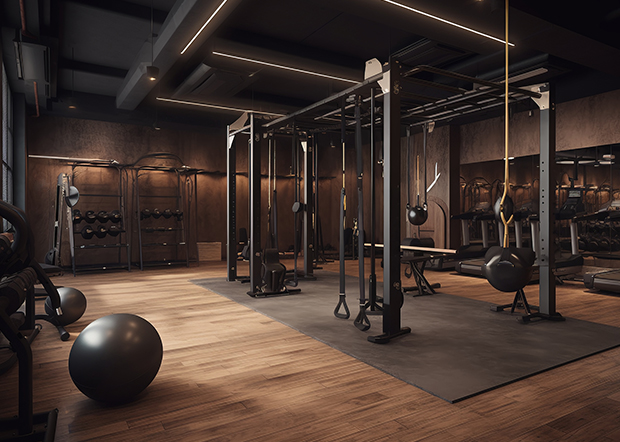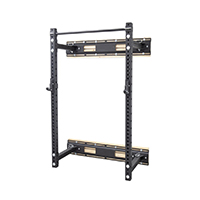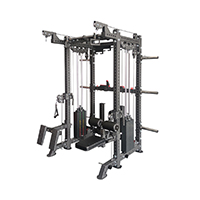Strength Training
Home / Weight Machines / Strength Training
Get Stronger with Strength Training | Wholesale Equipment
Strength training is a crucial component of fitness that aims to enhance muscle strength, endurance, and overall physical performance. This type of training utilizes a variety of specialized equipment tailored to meet the needs of individuals at any fitness level, from beginners to advanced athletes.
Essential equipment for strength training includes the Glute-Ham Developer (GHD), which effectively targets the glutes, hamstrings, and lower back, promoting posterior chain strength and functional stability. Weight machines, like the fly machine, are also key tools in a strength training regimen, allowing for isolation exercises that focus on the chest and shoulders, enhancing muscle engagement and promoting growth through controlled movements.
The Smith machine adds further value to any strength training regimen by providing a guided barbell system that ensures stability and safety. This equipment is ideal for performing a variety of exercises, including barbell squat lift, bench presses, and shoulder presses, making it particularly beneficial for those focused on proper form and technique while lifting heavier weights.
Beyond building muscle, strength training offers numerous health benefits, including increased metabolism, improved bone density, and enhanced athletic performance. By incorporating a mix of free weights, machines, and bodyweight exercises, individuals can develop a well-rounded strength training program that aligns with their specific goals.
Strength training is not just about achieving a muscular physique; it also strengthens bones, improves balance and coordination, and boosts calorie burn even at rest, helping to maintain a healthy weight. These benefits become increasingly important as individuals age and naturally begin to lose muscle mass.
Although the weight room may seem intimidating, with its heavy equipment and dedicated users, Leadman Fitness provides public access to extensive resources to empower the community. This commitment ensures that everyone has the opportunity to thrive in strength and conditioning, making strength training an accessible and rewarding part of any fitness journey. Strength training builds muscle, boosts endurance, and enhances fitness by resisting external force. Leadman Fitness offers equipment to support your goals.
Strength Training Benefits
Physical Benefits
Engaging in regular strength training offers a multitude of physical benefits that contribute to overall fitness and health:
Increases Muscle Strength and Size:
One of the primary goals of strength training is to enhance muscle strength and size. By challenging your muscles with resistance exercises, you stimulate muscle fibers to adapt and grow. This not only makes daily activities easier, such as lifting groceries or climbing stairs, but also improves your overall athletic performance, making you stronger and more capable in various physical tasks.
Enhances Bone Density and Reduces the Risk of Osteoporosis:
Strength training is crucial for maintaining and increasing bone density, particularly as you age. The mechanical stress applied to bones during resistance training stimulates bone remodeling, leading to denser and stronger bones. This is especially important for preventing osteoporosis, a condition characterized by fragile bones that are more prone to fractures.
Improves Joint Function and Flexibility:
Strength training strengthens the muscles surrounding joints, providing better support and stability. This enhanced muscular support helps reduce the risk of injuries and improves overall joint function. Additionally, incorporating stretching and flexibility exercises into your routine can further enhance joint mobility and decrease stiffness.
Health Benefits
The health benefits of strength training extend beyond muscle and bone health, positively impacting various bodily functions:
Aids in Weight Management and Fat Loss:
Engaging in strength training can significantly aid in weight management and fat loss. As you build muscle, your resting metabolic rate increases, meaning you burn more calories even at rest. This can lead to a healthier body composition over time, as muscle mass is more metabolically active than fat tissue.
Boosts Metabolism and Improves Cardiovascular Health:
Strength training contributes to an overall increase in metabolism, facilitating easier weight control. Moreover, studies have shown that regular strength training can improve cardiovascular health by reducing blood pressure and improving cholesterol levels, thereby decreasing the risk of heart disease.
Reduces the Risk of Chronic Diseases:
Engaging in regular strength training is associated with a lower risk of developing chronic diseases such as type 2 diabetes, obesity, and metabolic syndrome. It helps regulate blood sugar levels, improves insulin sensitivity, and reduces inflammation, all of which are key factors in preventing chronic illnesses.
Psychological Benefits
The psychological benefits of strength training are profound and can greatly enhance your quality of life:
Enhances Mood and Reduces Symptoms of Anxiety and Depression:
Physical activity, including strength training, is known to trigger the release of endorphins, often referred to as “feel-good” hormones. These endorphins can help alleviate feelings of anxiety and depression, promoting a more positive mood. Regular strength training can lead to significant improvements in mental well-being.
Improves Self-Esteem and Body Image:
As individuals progress in their strength training journeys, they often experience improvements in self-esteem and body image. Achieving strength goals, gaining muscle, and improving physical appearance can lead to greater confidence. This newfound self-assurance can permeate other areas of life, fostering a more positive outlook.

Strength Training for Women
Breaking Myths
Strength training for women has often been surrounded by misconceptions that may discourage many from engaging in this beneficial form of exercise. Addressing these myths is crucial for empowering women to embrace strength training:
Discussion on Common Misconceptions:
One of the most prevalent myths is that women will become bulky or overly muscular if they lift weights. This misconception stems from a misunderstanding of how muscle growth works. While women do build muscle through strength training, they typically have lower testosterone levels than men, which limits the extent of muscle hypertrophy. Instead of becoming bulky, women can achieve a toned and athletic physique through strength training, enhancing their overall appearance.
Explanation of How Strength Training Can Enhance Femininity and Athletic Performance:
Strength training can significantly enhance femininity by promoting a toned, fit appearance that many women desire. Moreover, it can improve posture, boost confidence, and contribute to a positive body image. From an athletic perspective, strength training improves performance in sports and everyday activities by enhancing power, speed, and agility. By building strength, women can increase their functional fitness, making everyday tasks easier and reducing the risk of injury.
Tailored Programs
To maximize the benefits of strength training, it’s essential for women to engage in programs specifically designed to meet their unique needs and goals:
Overview of Strength Training Programs Specifically Designed for Women:
These programs often focus on compound movements that engage multiple muscle groups, such as squats, deadlifts, lunges, and bench presses. Additionally, they incorporate bodyweight exercises and resistance training with free weights or machines to create a balanced workout routine. Programs may vary in focus, targeting goals such as muscle toning, fat loss, or overall strength enhancement.
Emphasis on Building Strength and Toning Muscles:
A well-rounded strength training program for women should prioritize building functional strength while promoting muscle tone. This can be achieved through a mix of higher repetitions (8-12) with moderate weights, enabling muscle endurance while sculpting the body. It’s important to include progressive overload in training—gradually increasing weights, repetitions, or sets over time to challenge the muscles and encourage growth.
Furthermore, many programs cater to different experience levels, from beginners to advanced lifters. Beginners might start with lighter weights and focus on form, while more experienced lifters can incorporate advanced techniques, such as supersets, circuits, or high-intensity interval training (HIIT), to further enhance their strength and fitness.
Strength Training for Beginners
Sample Beginner Program
A well-structured beginner program should include a variety of exercises that target all major muscle groups, ensuring balanced development and reducing the risk of muscle imbalances. Here’s a simple strength training routine suitable for beginners:
Frequency: Aim to complete this routine two to three times per week on non-consecutive days to allow for recovery. Warm-Up: Start each session with a 5-10 minute warm-up, such as brisk walking or light jogging, followed by dynamic stretches to prepare your muscles and joints for exercise.
Bodyweight Squats (3 sets of 10-12 reps): Targets the quadriceps, hamstrings, and glutes. Focus on keeping your back straight and knees aligned with your toes. Push-Ups (3 sets of 8-10 reps): Engages the chest, shoulders, and triceps. Modify by performing push-ups on your knees if needed to maintain form. Dumbbell Rows (3 sets of 10-12 reps per arm): Works the back muscles and biceps. Use light dumbbells to start and focus on keeping your core engaged and back flat during the exercise. Plank (3 sets of 20-30 seconds): Strengthens the core and improves stability. Maintain a straight line from head to heels, avoiding sagging hips or raised buttocks. Lunges (3 sets of 10 reps per leg): Focuses on the lower body, including the quadriceps and glutes. Step forward and lower your body until both knees are at approximately 90-degree angles.
Allow 30-60 seconds of rest between sets to recover adequately. Listen to your body; if you feel fatigued, take a longer rest before continuing.
Getting Started
Starting a strength training program can be an exciting journey toward improved fitness and health. However, beginners should consider several key factors to ensure a safe and effective start:
Consulting with a Doctor: Before beginning any new exercise program, it’s essential to consult with a healthcare professional, especially if you have existing health conditions or concerns. A doctor can provide personalized advice based on your medical history and help identify any necessary precautions to take while exercising. Assessing Fitness Levels: Understanding your current fitness level is crucial for tailoring your training program. Beginners should take note of their strength, endurance, flexibility, and any previous experience with exercise. This self-assessment can help determine appropriate starting weights and exercises, ensuring a more effective training plan.
One of the biggest mistakes beginners make is attempting to lift too much weight too soon. Starting slowly allows your body to adapt to the stresses of strength training and minimizes the risk of injury. Prioritizing proper form is equally important. Good technique not only enhances workout effectiveness but also protects against injuries. Consider seeking guidance from a certified trainer for personalized instruction on proper lifting techniques, especially during the initial stages.
Strength Training Program
Designing an Effective Program
Creating a personalized strength training program is essential for achieving your specific fitness goals. Here are some tips to help you design an effective program:
Tips for Creating a Personalized Strength Training Program:
Identify Your Goals: Start by determining your primary objectives. Are you aiming to increase strength, build muscle size (hypertrophy), or improve endurance? Each goal requires a different approach:
Strength: Focus on lifting heavier weights with lower repetitions (1-6 reps) and longer rest periods (2-5 minutes). Use compound movements like squats, deadlifts, and bench presses.
Hypertrophy: Aim for moderate weights with moderate repetitions (6-12 reps) and shorter rest periods (30-90 seconds). Incorporate a mix of compound and isolation exercises to target specific muscle groups.
Endurance: Use lighter weights with higher repetitions (12-20+ reps) and minimal rest (30 seconds). Focus on circuit training or high-repetition bodyweight exercises to build muscular endurance.
Plan Your Weekly Schedule: Divide your workout days according to your goals and recovery needs. A common approach is to train major muscle groups two to three times a week. For example, you might split your workouts into upper body and lower body days or focus on different muscle groups each day.
Incorporate Progressive Overload: Gradually increase the weights, repetitions, or sets in your program to challenge your muscles and stimulate growth. This principle is vital for continued progress and avoiding plateaus.
Variation in Workouts: To prevent adaptation and keep workouts engaging, regularly change your exercises, rep ranges, and training styles. This can include altering the tempo of lifts, incorporating different equipment, or trying new exercises.
Tracking Progress
Monitoring your progress is crucial to ensure your training program remains effective and aligned with your goals:
Methods for Tracking Strength Gains:
Keep a Training Log: Document your workouts, including the exercises performed, weights lifted, sets, and repetitions. This record allows you to identify trends in your strength and progress over time.
Regular Assessments: Schedule periodic assessments to measure your strength gains. This could involve testing your one-rep max (1RM) for key lifts or noting improvements in your performance during workouts. For example, if you can increase the weight you lift or the number of repetitions you complete, you are likely making progress.
Take Measurements: If your goal includes changes in body composition, consider taking body measurements (e.g., waist, hips, arms) and tracking your weight periodically. This data can help gauge whether your strength training program is effective in achieving your desired results.
Importance of Setting Realistic and Achievable Goals:
Establishing realistic goals is vital for maintaining motivation and commitment to your strength training program. Break larger goals into smaller, manageable milestones. For instance, if your long-term goal is to increase your bench press by 50 pounds, set short-term goals to increase it by 5-10 pounds over a few months.
Remember to celebrate your achievements, no matter how small. This positive reinforcement helps sustain motivation and reinforces your commitment to the program.
Strength Training for Weight Loss
How Strength Training Aids Weight Loss
Strength training is a powerful tool for those looking to lose weight and improve their overall health. Here’s how it contributes to effective weight loss:
Explanation of How Muscle Mass Affects Metabolism and Calorie Burning:
Muscle tissue is metabolically active, meaning it requires energy to maintain. The more muscle mass you have, the higher your resting metabolic rate (RMR)—the number of calories your body burns at rest. By incorporating strength training into your fitness routine, you can increase your muscle mass, which in turn boosts your metabolism. This means you'll burn more calories throughout the day, even when you're not exercising. Additionally, strength training helps to preserve lean muscle mass during a calorie deficit, which is crucial for preventing metabolic slowdown that often accompanies weight loss. This preservation allows for more effective and sustainable fat loss over time.
Overview of High-Intensity Strength Training (e.g., Circuit Training) for Maximum Fat Loss:
High-intensity strength training, such as circuit training, combines strength exercises with minimal rest periods, elevating your heart rate and maximizing calorie burn. This approach not only builds muscle but also provides cardiovascular benefits, further enhancing fat loss. Circuit training typically involves performing a series of exercises back-to-back, targeting different muscle groups. This keeps your workout engaging and efficient, allowing you to achieve more in less time. For example, a circuit might include push-ups, squats, kettlebell swings, and burpees, performed consecutively with short breaks in between.
Combining Strength and Cardio
For optimal weight loss results, it’s essential to incorporate both strength training and cardiovascular exercises into your fitness regimen:
Discussion on the Benefits of Combining Strength Training with Cardiovascular Exercises for Effective Weight Loss: Additionally, engaging in both forms of exercise can prevent workout monotony, keeping your routine exciting and sustainable. This varied approach also helps target different aspects of fitness—muscular strength, endurance, and cardiovascular health—leading to a well-rounded fitness level. Sample Workout Plan Incorporating Both Elements: Monday: Strength Training (Full Body) Circuit: 3 rounds of: 30 minutes of moderate-intensity cardio (e.g., jogging, cycling, or swimming). Circuit: 3 rounds of: Light yoga or stretching for flexibility. Circuit: 3 rounds of: 20-30 minutes of high-intensity interval training (HIIT) or a fun group fitness class. Allow your body to recover and repair.
Combining strength training with cardio offers a comprehensive approach to weight loss. While strength training builds muscle and boosts metabolism, cardio workouts help burn calories and improve cardiovascular health. This combination can create a calorie deficit, which is crucial for weight loss.
Here’s a sample weekly workout plan that includes both strength training and cardio:
Squat pull down: 12 reps
Push-Ups: 10 reps
Dumbbell Rows: 12 reps
Plank: 30 seconds
Tuesday: Cardio
Wednesday: Strength Training (Upper Body Focus)
Raised Bench Press: 10 reps
Overhead Press: 10 reps
Tricep Dips: 10 reps
Bicycle Crunches: 15 reps
Thursday: Active Recovery
Friday: Strength Training (Lower Body Focus)
Deadlifts: 10 reps
Lunges: 10 reps per leg
Glute Bridges: 12 reps
Side Plank: 30 seconds per side
Saturday: Cardio
Sunday: Rest
Strength Training Gym
Benefits of a Gym Environment
Training in a gym setting offers several advantages that can enhance your strength training experience:
Advantages of Training in a Gym Setting: Access to a Variety of Equipment: Gyms typically offer a wide range of equipment that caters to all aspects of strength training. From free weights (dumbbells and barbells) to resistance machines, cable systems, and specialty bars, having diverse options allows you to target different muscle groups effectively. This variety can help prevent workout monotony and enable you to explore various training techniques, which is essential for continuous progress. Professional Guidance: Many gyms employ certified trainers who can provide valuable guidance and support. Whether you’re a beginner or an experienced lifter, having access to professional advice can significantly enhance your training. Trainers can assist with proper form, help you develop a tailored workout plan, and ensure you’re using equipment safely and effectively. This guidance can lead to better results and reduce the risk of injury. Discussion on Group Classes and Community Support: Additionally, many gyms offer specialty classes focusing on strength training, such as boot camps, circuit training, or body pump classes. These classes can introduce you to new exercises, promote friendly competition, and create a sense of camaraderie among participants, further enhancing your fitness journey. Selecting the right gym is crucial for maintaining motivation and ensuring a positive workout experience. Here are some tips to help you make an informed choice: Tips for Selecting a Gym That Fits Your Training Needs and Preferences: Location and Accessibility: Choose a gym that is conveniently located near you. The closer it is, the more likely you are to stick to your routine. Also, check the gym’s hours of operation to ensure they fit your schedule, especially if you prefer to work out early in the morning or late in the evening. Programs and Classes: Investigate the variety of programs and classes offered at the gym. If you enjoy group workouts or need specific strength training programs, ensure the gym provides options that align with your interests. Look for classes led by qualified instructors who can help you reach your goals effectively. Trial Memberships and Tours: Many gyms offer trial memberships or day passes that allow you to experience the facility before committing. Take advantage of these offers to assess the environment, staff, and equipment. During your visit, observe how busy the gym is during peak hours and whether the atmosphere feels welcoming and motivating. Community and Culture: Pay attention to the gym culture. A supportive and friendly environment can significantly impact your motivation and enjoyment. Speak to current members or staff to gauge the sense of community and whether it aligns with your preferences.
Participating in group classes is another benefit of training in a gym environment. These classes provide a structured workout led by an instructor, which can be particularly motivating and engaging. Group settings foster a sense of community, allowing you to connect with others who share similar fitness goals. This support can enhance accountability, encourage consistency, and make workouts more enjoyable.Choosing the Right Gym
Evaluate Facilities: Look for a gym that has the equipment and facilities you need to achieve your fitness goals. Check if they have free weights, machines, functional training areas, and space for classes. Additionally, consider amenities like showers, locker rooms, and saunas that can enhance your overall experience.
Strength Training Equipment: Guide to Gym Choices and Their Functions
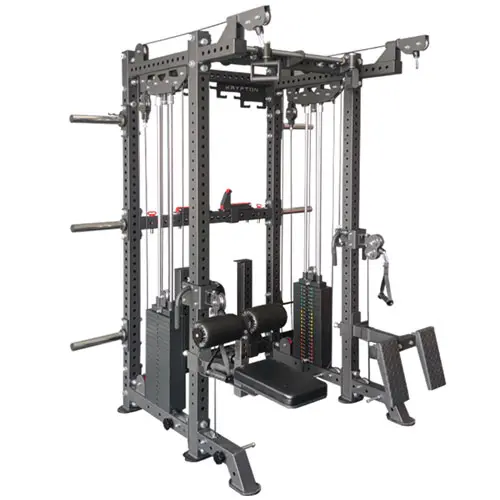
Strength training is an essential part of fitness, helping individuals build muscle, improve endurance, and enhance overall physical function. A well-equipped gym provides various machines and free weights that cater to different training styles and goals. Choosing the right equipment depends on factors such as experience level, target muscle groups, and workout intensity. Understanding how each type of equipment works can help maximize training efficiency while reducing the risk of injury. Below is a detailed introduction to the primary categories of strength training equipment, their functions, and how they contribute to effective workouts.
Free Weights: The Foundation of Strength Training
Free weights are one of the most versatile and effective tools for strength training. Unlike machines, they require the user to stabilize the weight throughout the movement, engaging multiple muscle groups and improving functional strength. Free weights allow for a full range of motion, making them ideal for developing coordination, balance, and muscle symmetry.
Key Free Weight Equipment:
- Dumbbells – These handheld weights come in fixed or adjustable varieties and are widely used for both unilateral and bilateral exercises. Dumbbells provide flexibility, allowing users to perform various movements, including bicep curls, shoulder presses, and lunges. They help correct muscle imbalances, as each limb works independently.
- Barbells – Barbells consist of a long metal bar with detachable weight plates. They are fundamental in compound lifts such as squats, deadlifts, and bench presses, which recruit multiple muscle groups simultaneously. Barbells allow for heavy lifting and progressive overload, making them ideal for muscle growth and strength development.
- Kettlebells – Kettlebells have a distinct ball-like shape with a handle, allowing for dynamic and explosive movements. Exercises like kettlebell swings, snatches, and Turkish get-ups challenge coordination and engage core muscles while building endurance and power.
How Free Weights Work:
Free weights rely on gravity as resistance, requiring users to engage stabilizing muscles to maintain control. This activation improves functional strength and enhances muscle engagement compared to machine-based training. Free weight exercises can be easily modified to suit different fitness levels, from beginners to advanced lifters.
Weight machines provide guided movement patterns that isolate specific muscle groups, making them particularly useful for beginners, injury rehabilitation, and muscle-specific training. Unlike free weights, machines offer fixed movement paths, reducing the risk of incorrect form and minimizing injury potential. Weight machines use a system of pulleys and stacked weights to create resistance. Users can adjust the weight load by inserting a pin into the desired weight level, making it easy to modify intensity. The controlled range of motion ensures proper muscle activation while minimizing strain on supporting joints and ligaments. Cable machines use a pulley system that provides continuous tension throughout the entire range of motion, making them highly effective for strength training. Unlike free weights, where resistance varies depending on leverage and gravity, cable machines offer smooth and consistent resistance, reducing strain on joints. They also allow for multi-directional movement, enhancing functional strength and coordination. Cable machines rely on weighted plates connected to pulleys, allowing for smooth and continuous resistance. Unlike free weights, they provide resistance throughout the entire movement, ensuring constant muscle engagement. The ability to adjust angles and positions makes cable exercises highly adaptable to individual needs. Resistance bands are elastic bands that provide variable resistance, making them a great addition to any strength training routine. While they do not replace heavy lifting, they offer unique benefits such as improved mobility, injury prevention, and muscle activation. Unlike traditional weights, resistance bands provide tension throughout the entire range of motion, forcing muscles to work harder during both the concentric (lifting) and eccentric (lowering) phases. They are especially effective for warm-ups, rehabilitation, and adding resistance to bodyweight exercises. Selecting the appropriate strength training equipment depends on fitness goals, experience level, and training style. Free weights are ideal for building raw strength and functional movement, while machines provide a controlled environment for targeted muscle engagement. Cable machines offer versatility and continuous tension, while resistance bands serve as convenient, portable training tools. Incorporating a combination of these tools into a strength training routine ensures well-rounded development, helping individuals improve muscle mass, endurance, and overall fitness. By understanding how each piece of equipment works, gym-goers can maximize their workouts and achieve their fitness goals efficiently.Weight Machines: Controlled Resistance for Targeted Muscle Training
Common Weight Machines and Their Functions:
How Weight Machines Work:
Cable Machines: Versatile and Adjustable Resistance Training
Types of Cable Machines and Their Benefits:
How Cable Machines Work:
Resistance Bands: Portable Strength Training Alternatives
Types of Resistance Bands:
How Resistance Bands Work:
Benefits of Wholesale Strength Training Equipment for Commercial Gyms
For commercial gyms, investing in strength training equipment is essential to provide a high-quality workout experience for members. Strength training requires various types of equipment, including free weights, weight machines, cable machines, and resistance bands, each serving different training purposes. Instead of purchasing these items individually, wholesale buying offers numerous advantages, including cost savings, consistency in quality, and better gym management. Below, we explore the key reasons why commercial gyms should choose wholesale strength training equipment.
Cost-Effectiveness: Maximizing Budget Efficiency
Purchasing strength training equipment in bulk significantly reduces costs compared to buying individual pieces. Commercial gyms require multiple sets of weights and machines to accommodate members, making wholesale a financially smart choice.
How Wholesale Saves Money:
- Bulk Discounts – Suppliers offer lower per-unit prices when equipment is purchased in bulk, reducing overall expenses.
- Lower Shipping Costs – Buying multiple items at once minimizes shipping fees compared to multiple small orders.
- Supplier Incentives – Wholesalers often provide additional perks such as extended warranties, maintenance services, or free accessories, adding value to the purchase.
By investing in wholesale equipment, gyms can allocate more of their budget to other areas such as facility upgrades, member services, and marketing.
A well-organized gym requires consistency in equipment to ensure a seamless training experience for members. Wholesale purchasing guarantees uniformity in equipment style, function, and brand quality. Uniform equipment not only improves functionality but also enhances the gym’s reputation and member satisfaction. For gyms planning to expand, wholesale purchasing allows for better scalability. As membership grows, gyms must increase their equipment inventory to accommodate more users. By planning for long-term growth, commercial gyms can maintain a smooth and uninterrupted training experience for their members. A diverse range of strength training equipment is essential for catering to different fitness levels and workout styles. Wholesale purchasing ensures that gyms can provide a full range of training tools without stock shortages. By offering a variety of strength training options, commercial gyms can attract and retain a diverse range of fitness enthusiasts. Working with a wholesale supplier creates a strong business relationship, ensuring ongoing support, maintenance, and product availability. A dependable supplier relationship simplifies equipment management, allowing gyms to focus on providing excellent services to their members. For commercial gyms, wholesale strength training equipment is a cost-effective, scalable, and practical solution. It ensures uniformity, provides a diverse range of equipment, supports gym expansion, and fosters long-term supplier relationships. By choosing wholesale purchases, gym owners can maximize their investment, improve member satisfaction, and create a professional and well-equipped training environment.Equipment Uniformity: Consistency in Gym Setup
Why Equipment Uniformity Matters:
Scalability: Supporting Gym Expansion and Growth
How Wholesale Helps Gym Expansion:
Variety and Availability: Ensuring Comprehensive Strength Training Options
Why Variety is Important:
Long-Term Supplier Relationships: Reliable Service and Support
Benefits of a Long-Term Supplier Partnership:
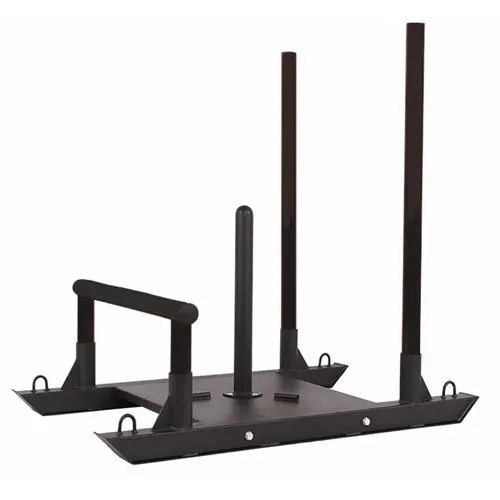
Leadman Fitness: Your Trusted Strength Training Equipment Manufacturer
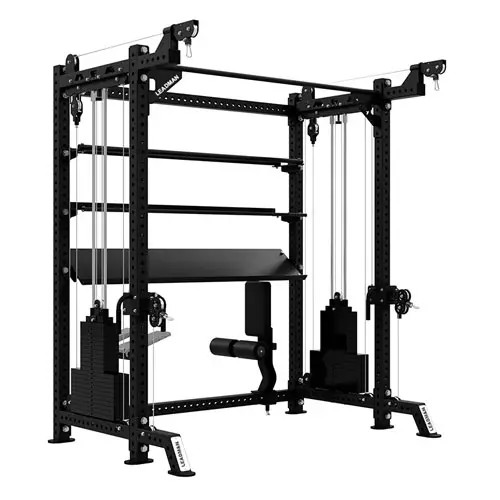
At Leadman Fitness, we are a global manufacturer with over ten years of industry experience, dedicated to producing high-quality strength training equipment. Since our establishment in 2014 in China, we have continuously pushed the boundaries of fitness innovation. With four specialized factories, we manufacture a comprehensive range of products, including barbell plates, dumbbells, Olympic bars, fitness racks, benches, Smith machines, Roman chairs, storage racks, kettlebells, iron plates, and precision steel plates. Our advanced casting factory ensures precision and durability, making our products the preferred choice for fitness professionals worldwide.
Why Choose Leadman Fitness for Wholesale Strength Training Equipment?
As a leading enterprise specializing in integrated training products, we offer wholesale services to commercial gyms, fitness centers, and distributors looking for high-quality strength training equipment. By purchasing in bulk from us, businesses benefit from cost-effective pricing, uniform equipment quality, and seamless scalability. We provide an extensive selection of fitness tools, ensuring that gyms of all sizes can find the right products to meet their needs.
With an independent R&D department consisting of 47 professional designers, we are capable of developing personalized fitness equipment that meets specific customer requirements. From customized product appearance to performance optimization, we ensure that our clients receive equipment that aligns with their gym’s branding and functional needs. At Leadman Fitness, our mission is to push the limits of fitness equipment, surpass physical boundaries, and set new industry standards. We continue to innovate and lead the market with groundbreaking designs and club-quality products that elevate the strength training experience. For commercial gyms, fitness centers, and equipment distributors, we offer wholesale opportunities to help build state-of-the-art training spaces. Contact us via email to explore our wide range of fitness equipment and take your strength training facility to the next level.Innovative Design and Customization
Join Us in Redefining Strength Training
How to Find and Evaluate Strength Training Operation Method Videos
With the increasing popularity of strength training, many people rely on online videos to learn proper exercise techniques. However, the vast amount of content available makes it essential to know where to find reliable strength training operation method videos and how to assess their quality. This guide will introduce multiple channels for locating instructional videos and provide key criteria for evaluating their effectiveness and trustworthiness.
Channels for Finding Strength Training Operation Method Videos
There are several reliable platforms where you can find strength training videos. Each has its advantages, depending on whether you’re looking for beginner guides, professional coaching, or specific training programs.
YouTube
YouTube is the most popular platform for free strength training tutorials. Channels like Jeff Nippard, Athlean-X, and Squat University provide scientifically backed training methods with proper demonstrations. Searching for specific exercises, such as “proper squat form” or “deadlift technique,” can yield numerous results.
Fitness Websites and Apps
Platforms like Bodybuilding.com, Nike Training Club, and MyFitnessPal offer structured strength training videos, often designed by certified trainers. These sources provide clear instruction and sometimes include workout plans tailored to different fitness levels.
Social Media (Instagram & TikTok)
Many professional trainers share short-form video demonstrations on Instagram and TikTok. Following certified personal trainers and strength coaches can provide quick tips and insights. However, due to the short length of these videos, they may lack in-depth explanations.
Online Fitness Courses & Subscription Platforms
Paid platforms like MasterClass, Udemy, and NASM (National Academy of Sports Medicine) provide in-depth strength training courses with expert instruction. These are excellent for those looking for a structured learning experience.
Streaming Services & Digital Libraries
Some streaming services, such as Amazon Prime Video, Apple Fitness+, and Peloton, offer high-quality training videos with guided instruction. These often come as part of a paid subscription but feature well-produced content.
Not all videos provide accurate or safe guidance. It’s essential to assess their quality before applying their techniques to your workouts. Here are some key factors to consider: A video’s credibility depends largely on the trainer’s expertise. Look for certifications from reputable organizations like NASM, ACE, NSCA, or ISSA. Trainers with professional experience in strength coaching or sports science are generally more reliable. A good strength training video should provide: If a video lacks detailed instructions or skips critical form corrections, it may not be trustworthy. Reliable videos often cite scientific principles or research supporting their techniques. Trainers who reference biomechanics, muscle activation studies, or training methodologies are usually more credible. Avoid content that promotes myths, such as “spot reduction” or “lifting makes you bulky.” Checking the comments section, likes, and reviews can help determine if others found the video useful. If multiple users report injuries or incorrect information, consider finding a different source. Positive engagement and constructive discussions indicate higher credibility. While production value isn’t the top priority, well-produced videos often indicate professionalism. Look for: Watching multiple videos on the same exercise can help cross-check information. If different trainers give conflicting advice, look for consensus among certified experts. Finding and evaluating strength training operation method videos requires knowing where to look and how to judge their quality. YouTube, fitness apps, and professional courses are great sources, but it’s crucial to check trainer credentials, instructional clarity, and user feedback. By following these guidelines, you can ensure that the videos you rely on provide safe, effective, and scientifically backed strength training methods.How to Evaluate the Quality of Strength Training Videos
Trainer Credentials and Experience
Correct Demonstration and Explanation
Scientific Basis and References
User Feedback and Comments
Production Quality and Clarity
Comparison with Multiple Sources
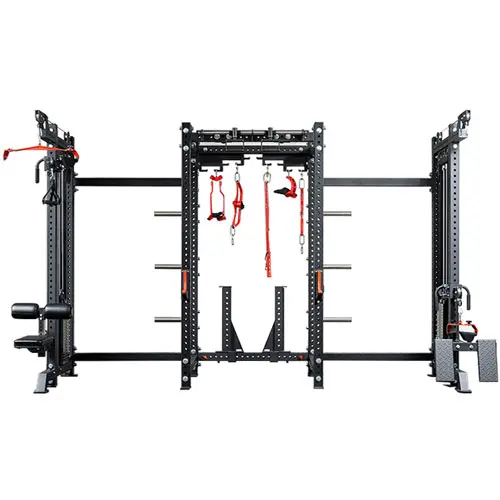
Things to Consider with Strength Training
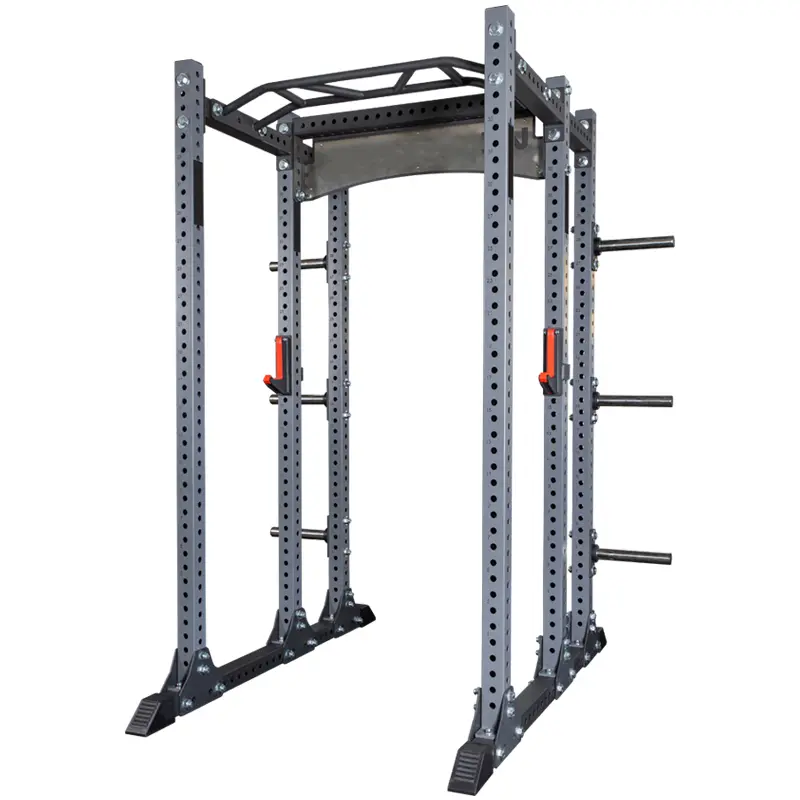
Strength training is a powerful way to build muscle, improve bone density, and enhance overall health. However, it’s essential to approach it with the right mindset and precautions to maximize benefits while minimizing injury risks. Before starting a strength training program, several factors must be considered, including health conditions, proper technique, individual goals, and exercise modifications. This guide will cover key aspects to help you engage in strength training safely and effectively.
Consult a Doctor Before Starting
Before beginning a strength training routine, it’s crucial to ensure your body is ready for the physical demands. Consulting a doctor is especially important if you have pre-existing health conditions or are recovering from an injury.
- A medical professional can assess your cardiovascular health, joint conditions, or any risk factors that might affect your ability to lift weights.
- Individuals with chronic conditions such as arthritis, high blood pressure, or diabetes should get personalized recommendations for safe training.
- If you are pregnant or recovering from surgery, specialized guidance is necessary to avoid complications.
Getting medical clearance ensures that you can train safely and adapt exercises to fit your health needs.
One of the biggest mistakes in strength training is pushing through pain, which can lead to injuries and long-term damage. Understanding the difference between discomfort and pain is essential. Prioritizing safety and proper technique over ego-driven lifting helps maintain long-term progress and prevents setbacks. Beginners should ease into strength training to allow the body to adapt gradually. Starting too aggressively can lead to injuries and excessive muscle soreness. Taking a progressive approach helps develop strength safely and effectively while reducing the risk of injury. Not all exercises are suitable for every individual. Selecting movements that fit your goals ensures that your strength training program is both effective and sustainable. Customizing your training based on personal needs prevents unnecessary strain and leads to better long-term results. Strength training is adaptable, and modifications can make exercises more accessible to those with mobility limitations or physical challenges. Adjusting workouts to suit your abilities ensures that strength training remains safe and beneficial for everyone. A common misconception is that resistance training is dangerous for women with or at risk for breast cancer-related lymphedema. However, research shows that strength training does not increase risk and can even offer benefits. Proper strength training can enhance physical strength and confidence while supporting overall health for breast cancer survivors. Strength training offers numerous health benefits, but approaching it safely is key to long-term success. Consulting a doctor, avoiding pain, starting gradually, selecting appropriate exercises, modifying movements based on physical abilities, and understanding special considerations like breast cancer-related lymphedema are all crucial aspects of a safe and effective strength training program. By following these guidelines, you can build strength while reducing the risk of injury and maximizing your fitness potential.Avoid Training Through Pain
Start Slowly and Assess Your Capabilities
Choose Exercises That Align with Your Goals
Modify Exercises Based on Physical Abilities
Strength Training and Breast Cancer-Related Lymphedema
How to Judge How Strong Your Strength Training Should Be
Determining the right intensity for strength training is essential for making progress while avoiding injury and overtraining. The appropriate training intensity depends on several factors, including your fitness level, goals, and recovery capacity. By understanding how to assess the difficulty of your workouts, you can optimize your training for maximum effectiveness. This guide will explore different aspects of strength training intensity, helping you determine how strong your training should be.
Consider Your Training Goals
Your strength training intensity should align with your specific fitness objectives. Different goals require varying levels of resistance, repetitions, and effort.
- Muscle Growth (Hypertrophy): If your goal is muscle growth, moderate to heavy weights with 6-12 reps per set at 65-85% of your one-rep max (1RM) are recommended. This intensity level creates muscle fatigue while allowing enough volume for hypertrophy.
- Strength Gains: For pure strength development, heavier loads with 1-6 reps per set at 80-100% of your 1RM are ideal. This requires maximal effort and long rest periods between sets.
- Endurance and Toning: If you aim for muscular endurance, lighter weights with 12-20+ reps per set at 50-65% of your 1RM will be more suitable. This type of training enhances muscle stamina and improves overall conditioning.
By defining your primary goal, you can better judge the intensity and load required for your strength training sessions.
One effective way to determine the appropriate strength training intensity is by using your one-rep max (1RM)—the maximum weight you can lift for a single repetition. This method provides a measurable way to ensure your training intensity matches your capabilities. The Rate of Perceived Exertion (RPE) scale is a subjective way to gauge workout intensity based on how difficult the exercise feels. Using RPE allows for daily adjustments, considering fatigue, recovery, and overall energy levels. Your ability to recover between sessions is a crucial indicator of whether your strength training intensity is appropriate. Signs of Proper Training Intensity: Signs of Overtraining: If recovery is insufficient, reducing intensity or incorporating more rest days may be necessary. Regular progress assessments help determine whether your strength training intensity is appropriate. Regular testing ensures you’re training at an optimal level without stagnating. Judging how strong your strength training should be requires considering your goals, using tools like the 1RM method, monitoring exertion levels with RPE, assessing recovery, and tracking progress. By balancing intensity with proper recovery, you can optimize your workouts for muscle growth, strength gains, or endurance without risking injury. Strength training should be challenging but sustainable—adjusting intensity based on performance and fatigue will ensure long-term success.Use the One-Rep Max (1RM) Method
Monitor the Rate of Perceived Exertion (RPE)
Assess Your Fatigue and Recovery
Test Your Progress Regularly
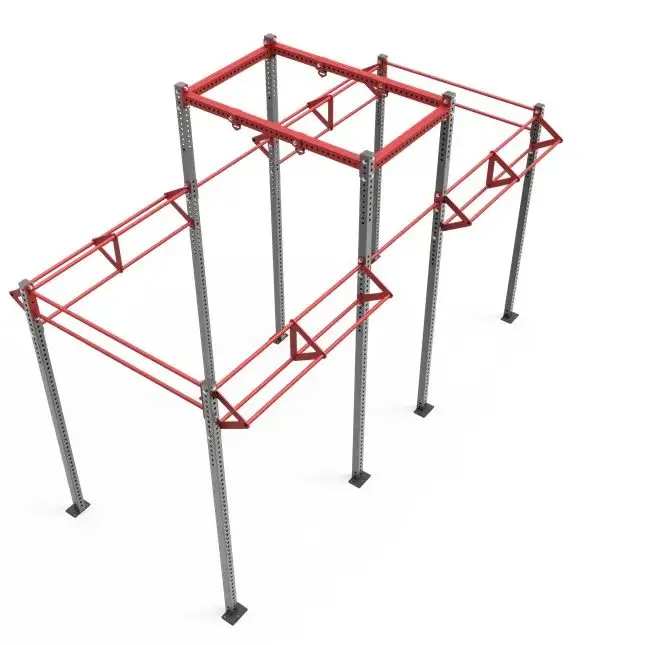
How to Judge Whether You Need a Professional Coach for Strength Training and How to Find the Right One
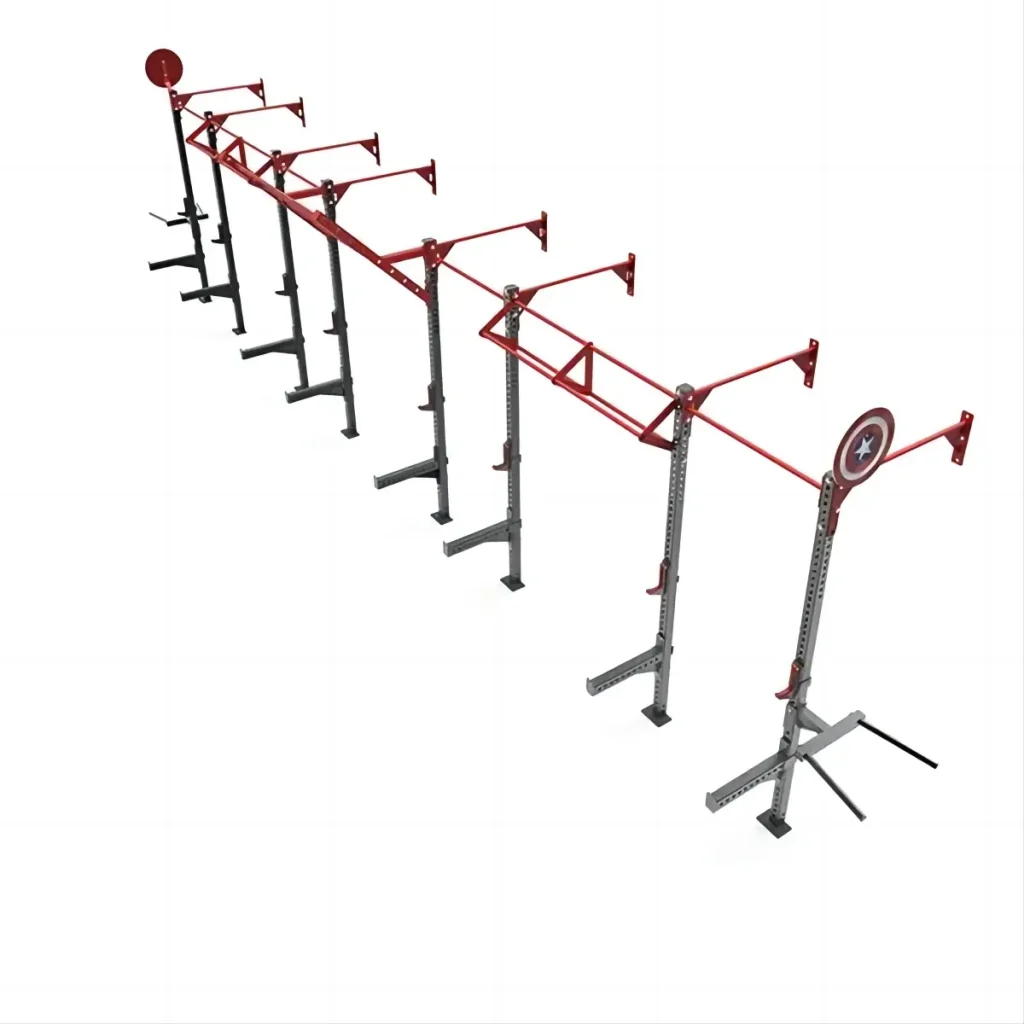
Strength training is an effective way to build muscle, enhance endurance, and improve overall health. However, not everyone progresses at the same pace, and some may struggle with proper technique, programming, or motivation. This raises the question of whether hiring a professional strength training coach is necessary. In this guide, we’ll explore how to determine if you need a coach and provide tips on finding the right one to match your goals and needs.
Signs That You Need a Professional Strength Training Coach
Before deciding to hire a coach, it’s essential to evaluate your current training situation. A coach can be beneficial in various scenarios, but not everyone requires one.
Lack of Proper Form and Technique
- If you struggle with basic lifts like squats, deadlifts, or bench presses, a coach can correct your technique and prevent injuries.
- Poor movement patterns increase the risk of joint strain, muscle imbalances, and inefficient workouts.
- A coach provides hands-on guidance to ensure each exercise is performed safely and effectively.
Struggling with Workout Structure and Progression
- If you’re unsure about how to design a progressive training program, a coach can create a plan tailored to your goals.
- Randomly selecting exercises without a structured routine can lead to plateaus and lack of results.
- A professional trainer helps adjust weight, sets, and reps based on your progress, ensuring consistent improvement.
Frequent Injuries or Chronic Pain
- If you often experience discomfort or injuries during strength training, a coach can identify the cause and help modify exercises accordingly.
- Many injuries result from poor mechanics, improper warm-ups, or excessive loads.
- A qualified coach can implement corrective exercises and personalized adjustments to minimize injury risks.
Lack of Motivation and Accountability
- If you struggle with consistency, hiring a coach can provide the motivation and accountability needed to stay on track.
- Having scheduled training sessions makes it harder to skip workouts and increases adherence to a structured routine.
- A good coach keeps you engaged, tracks your progress, and adjusts your plan based on your performance.
Preparing for a Competition or Specific Goal
- If you’re training for a powerlifting meet, bodybuilding competition, or sports performance, a coach can refine your technique and optimize your programming.
- Specialized training requires strategic periodization, recovery management, and targeted improvements that a coach can guide effectively.
If you identify with one or more of these signs, hiring a coach might be a worthwhile investment in your fitness journey.
Once you decide to work with a professional, the next step is finding the right coach. The best choice depends on their qualifications, experience, and compatibility with your goals. Deciding whether to hire a strength training coach depends on your experience level, goals, and challenges. If you struggle with technique, program structure, or motivation, a coach can provide valuable guidance and accountability. When selecting a coach, prioritize certifications, experience, coaching style, and client reviews to ensure they meet your needs. Whether online or in-person, the right strength training coach can help you train smarter, avoid injuries, and achieve your fitness goals more efficiently.How to Find a Suitable Strength Training Coach
Check Certifications and Credentials
Look for Experience in Your Specific Goals
Assess Coaching Style and Compatibility
Read Reviews and Ask for Testimonials
Consider Online vs. In-Person Coaching
Evaluate Pricing and Availability
FAQs about Strength Training
What are the five basic strength trainings?
Strength training encompasses various exercises and methods designed to enhance muscle strength, endurance, and size. The five basic strength training exercises often referred to as foundational movements are:
Squats: A fundamental lower-body exercise that targets the quadriceps, hamstrings, glutes, and core. Squats can be performed with body weight, dumbbells, or a barbell, and they help improve overall leg strength and stability.
Deadlifts: This compound exercise engages multiple muscle groups, including the back, glutes, hamstrings, and core. Deadlifts can be performed with various equipment, such as barbells or dumbbells, and are essential for developing posterior chain strength.
Bench Press: A key upper-body exercise targeting the chest, shoulders, and triceps. The bench press can be performed with a barbell or dumbbells and is fundamental for building upper-body strength.
Overhead Press: This exercise targets the shoulders, triceps, and upper chest. It can be performed standing or seated, using a barbell or dumbbells. The overhead press helps improve shoulder stability and strength.
Rows: Rowing exercises, such as bent-over rows or seated cable rows, primarily target the back muscles, including the lats and rhomboids, along with the biceps. Rows are crucial for developing upper-body pulling strength and improving posture.
How do you train for strength?
Training for strength involves a structured approach that focuses on increasing the maximum amount of force your muscles can exert. Here are several key components to consider when designing a strength training program:
Determine Your Goals: Begin by defining your specific strength goals, such as increasing your one-rep max (1RM) for specific lifts, building muscle size, or improving overall functional strength. Clear goals will help tailor your training program.
Select Appropriate Exercises: Focus on compound movements that engage multiple muscle groups. Key exercises include squats, deadlifts, bench presses, and overhead presses. Incorporate isolation exercises to target specific muscles as needed.
Use Progressive Overload: Gradually increase the resistance or intensity of your workouts over time. This can be achieved by adding weight, increasing repetitions, or adjusting the tempo of your lifts. Progressive overload is crucial for muscle growth and strength gains.
Repetition and Set Structure: For strength training, perform lower repetitions (1-6 reps) with heavier weights. Typically, aim for 3-5 sets per exercise. Longer rest periods (2-5 minutes) between sets are essential for recovery and optimal performance.
Prioritize Proper Form: Emphasizing correct technique is crucial for preventing injuries and maximizing strength gains. Consider working with a trainer to learn proper form or using resources such as instructional videos.
Allow for Recovery: Strength training requires adequate recovery to allow muscles to repair and grow. Schedule rest days and consider incorporating lighter workouts or active recovery sessions to aid in recovery.
What qualifies as strength training?
Strength training, also known as resistance training, is a form of physical exercise that involves the use of resistance to induce muscular contraction. This training method aims to increase strength, endurance, and muscle mass. Here are some key elements that qualify as strength training:
Use of Resistance: Any activity that requires muscles to work against an external force counts as strength training. This can include free weights (dumbbells, barbells), weight machines, resistance bands, or even body weight.
Targeting Major Muscle Groups: Strength training should engage multiple muscle groups. Exercises can be categorized as compound movements (like squats and deadlifts) that involve multiple joints and muscle groups or isolation exercises (like bicep curls) that focus on a single muscle group.
Increased Load Over Time: An essential component of strength training is progressive overload, which involves gradually increasing the amount of resistance used as your strength improves. This can be achieved through heavier weights, more repetitions, or advanced techniques.
Structured Routine: A formalized strength training program typically involves a schedule that includes specific exercises, sets, repetitions, and rest periods. It should be designed to ensure balanced training of all major muscle groups.
Goals of Strength Development: Strength training is often aimed at enhancing muscle strength, size, power, and endurance, contributing to improved athletic performance, better functional movement, and increased overall health.
What exercise counts as strength training?
Strength training encompasses a wide variety of exercises designed to enhance muscle strength, endurance, and overall fitness. Here are several exercises that qualify as strength training:
Free Weight Exercises: This includes exercises performed with dumbbells, kettlebells, or barbells. Examples include:
Squats: Engaging the lower body and core.
Deadlifts: Targeting the back, glutes, and hamstrings.
Bench Press: Focusing on the chest and triceps.
Weight Machine Exercises: Machines that use weights to provide resistance can help isolate specific muscle groups and are often easier for beginners to use. Examples include:
Leg Press: Targeting the quadriceps and hamstrings.
Lat Pulldown: Focusing on the back muscles.
Chest Press: Engaging the upper body muscles.
Bodyweight Exercises: These exercises use your body weight as resistance, making them accessible and versatile. Examples include:
Push-Ups: Targeting the chest, shoulders, and triceps.
Pull-Ups: Engaging the back and biceps.
Lunges: Working the legs and glutes.
Resistance Band Exercises: Resistance bands can be used for various strength training exercises, providing variable resistance throughout the movement. Examples include:
Banded Squats: Adding resistance to bodyweight squats.
Banded Rows: Strengthening the back and arms.
Banded Chest Press: Engaging the chest muscles.
Functional Training Movements: These exercises mimic everyday activities and improve overall strength. Examples include:
Kettlebell Swings: Targeting the hips, glutes, and core.
Medicine Ball Slams: Engaging the entire body.
Farmer’s Walk: Strengthening grip and improving core stability.
Is it okay to lift light weights every day?
Yes, lifting light weights every day can be beneficial, depending on your goal. If you’re focusing on muscular endurance, rehabilitation, or maintaining joint health, daily training with light weights is generally safe. It promotes blood flow, enhances neuromuscular coordination, and supports mobility. However, to prevent overuse injuries, it’s important to vary muscle groups and incorporate recovery strategies. If you aim for muscle growth or strength, you may need heavier weights and structured rest days to allow proper recovery. Overworking muscles without recovery can lead to fatigue, hinder progress, and increase injury risk. A balanced approach—such as alternating upper and lower body workouts or integrating active recovery—can help sustain long-term training without overtraining. Ultimately, listening to your body and adjusting intensity based on how you feel is key to making daily light weight training effective.
Is the 6-12-25 workout effective?
Yes, the 6-12-25 workout is highly effective for muscular hypertrophy and endurance. This method, popularized by strength coach Charles Poliquin, involves performing three exercises in a tri-set format: a heavy compound movement for 6 reps, a moderate-weight exercise for 12 reps, and a lighter isolation movement for 25 reps. The combination stimulates different muscle fibers, enhances metabolic stress, and promotes muscle growth through a high training volume. Additionally, the 6-12-25 method increases lactic acid buildup, triggering greater growth hormone release, which aids in muscle development and fat loss. However, this workout is highly demanding and requires proper recovery, making it more suitable for intermediate to advanced lifters. Beginners may struggle with its intensity and should start with simpler hypertrophy-focused training before progressing. Proper nutrition and recovery are essential to maximize its benefits and sustain performance across multiple sessions.
What are the Big 3 strength training exercises?
The “Big 3” strength training exercises are the squat, bench press, and deadlift. These compound movements target multiple muscle groups, making them highly effective for building strength and muscle mass.
- Squat – Engages the quadriceps, hamstrings, glutes, and core while improving lower-body strength, mobility, and stability.
- Bench Press – Focuses on the chest, shoulders, and triceps, enhancing upper-body pushing strength and power.
- Deadlift – Works the posterior chain, including the hamstrings, glutes, lower back, and core, improving total-body strength and grip.
These exercises are fundamental in powerlifting and strength programs because they recruit large muscle groups, boost testosterone levels, and improve overall athletic performance. They also enhance functional strength, benefiting daily activities and sports performance. Incorporating the Big 3 into your routine with progressive overload leads to consistent strength gains and muscular development over time.
What exercise builds the most muscle?
The deadlift is one of the most effective exercises for overall muscle growth. It engages multiple muscle groups, including the glutes, hamstrings, lower back, core, traps, and forearms, making it a full-body movement. Because it allows you to lift heavy loads, it stimulates high levels of mechanical tension and muscle activation, leading to significant hypertrophy. Additionally, deadlifts increase growth hormone and testosterone levels, which are crucial for muscle development.
However, other exercises like squats, bench presses, and pull-ups are also excellent for muscle growth. The best results come from a well-rounded training program that incorporates various compound movements and progressive overload. Combining deadlifts with proper nutrition, recovery, and consistent training ensures maximum muscle-building potential. While deadlifts are highly effective, proper form is essential to prevent injury and optimize performance.
What happens to your body when you start strength training?
When you start strength training, your body undergoes significant changes, both physically and neurologically. Initially, you may experience neuromuscular adaptations, meaning your nervous system becomes more efficient at recruiting muscle fibers, leading to strength gains before noticeable muscle growth.
Over time, your muscles experience hypertrophy (growth), increasing in size and density. Strength training also enhances bone density, reducing the risk of osteoporosis. Additionally, it improves metabolism, as muscle tissue burns more calories than fat, aiding in weight management.
Hormonal changes occur, including increased testosterone and growth hormone levels, which contribute to muscle development and fat loss. Strength training also enhances joint stability, posture, and overall functional movement. In the long term, regular training reduces the risk of chronic diseases like diabetes and heart disease. Although soreness is common in the beginning, your body adapts, leading to improved strength, endurance, and overall well-being.
What is a good strength training schedule?
A good strength training schedule depends on your experience level and goals. Here’s a basic guideline:
Beginners (3 Days/Week)
- Day 1: Full-body workout
- Day 2: Rest or light activity
- Day 3: Full-body workout
- Day 4: Rest
- Day 5: Full-body workout
- Day 6-7: Rest
Intermediate (4 Days/Week, Upper/Lower Split)
- Day 1: Upper body (push movements)
- Day 2: Lower body (squats, deadlifts)
- Day 3: Rest
- Day 4: Upper body (pull movements)
- Day 5: Lower body (accessory work)
- Day 6-7: Rest or active recovery
Advanced (5-6 Days/Week, Body Part Split)
- Chest & triceps
- Back & biceps
- Legs
- Shoulders
- Rest or weak-point training
Balancing intensity, volume, and recovery ensures sustainable progress.
What is cardio vs strength training?
Cardio and strength training serve different purposes but complement each other.
Cardio (Cardiovascular Exercise) – Focuses on heart and lung health by increasing heart rate for an extended period. Activities include running, cycling, and swimming. It improves endurance, burns calories, and supports overall cardiovascular function.
Strength Training – Focuses on building muscle strength and endurance through resistance exercises like weightlifting, bodyweight training, and resistance bands. It improves muscular growth, bone density, and metabolic rate.
Combining both is ideal for overall health. For fat loss, strength training preserves muscle mass while cardio helps create a calorie deficit. A well-balanced fitness routine incorporates both to enhance performance, longevity, and overall fitness.
What is the best form of strength training?
The best form of strength training depends on individual goals, but progressive overload training is the most effective. This involves gradually increasing resistance over time to stimulate muscle growth and strength. Key approaches include:
- Compound Movements – Exercises like squats, deadlifts, and bench presses engage multiple muscle groups.
- Free Weights – Barbells and dumbbells improve strength and coordination better than machines.
- Bodyweight Training – Push-ups, pull-ups, and dips develop functional strength.
- Progressive Overload – Continuously increasing weight, reps, or intensity ensures long-term progress.
- Periodization – Structuring training cycles to prevent plateaus and optimize performance.
The best training method aligns with your goals, whether for muscle growth, athletic performance, or general fitness.
What is the most common type of strength training?
The most common type of strength training is resistance training using weights, machines, or bodyweight. This includes:
- Hypertrophy Training – 6-12 reps per set, moderate to heavy weights, focused on muscle growth.
- Strength Training – 1-6 reps per set, heavier weights, aimed at increasing maximal strength.
- Endurance Training – 12+ reps, lighter weights, improves muscular stamina.
- Power Training – Explosive movements like Olympic lifts to develop strength and speed.
Most people follow a mix of these approaches, depending on their goals.
What is the single best weight lifting exercise?
The deadlift is often considered the single best weightlifting exercise. It engages nearly every major muscle group, including the back, glutes, hamstrings, core, and forearms. The deadlift improves overall strength, athletic performance, and functional movement patterns. Because it allows for heavy loading, it stimulates significant muscle growth and hormonal responses. Proper form is crucial to avoid injury, but when executed correctly, it’s one of the most effective lifts for total-body development.
How Should a Beginner Strength Train?
A beginner should start with full-body workouts that focus on compound movements like squats, deadlifts, bench presses, and rows. These exercises engage multiple muscle groups and promote balanced strength development. It’s best to begin with bodyweight exercises or light weights to master proper form before progressing to heavier loads. Strength training two to three times a week is ideal, allowing adequate recovery between sessions. A structured program, such as three sets of 8-12 reps per exercise, can help build strength and endurance. Proper warm-ups, including dynamic stretching and light cardio, reduce injury risks. Keeping a training log and progressively increasing weight or reps over time ensures steady progress. Prioritizing rest, sleep, and a protein-rich diet also supports muscle recovery and growth. If unsure, beginners should seek guidance from a certified trainer to learn proper techniques and avoid common mistakes.
Is 30 Minutes of Strength Training a Day Enough?
Yes, 30 minutes of strength training per day is enough, especially for beginners or those with a busy schedule. The key is focusing on intensity and efficiency. Full-body workouts or supersets (combining two exercises back-to-back) maximize time and muscle engagement. Training four to five times a week with compound movements ensures comprehensive muscle activation. If the goal is muscle gain, progressively increasing resistance and focusing on proper nutrition will yield results. Additionally, combining strength training with cardio can enhance fat loss and cardiovascular health. Short, high-intensity sessions can be just as effective as longer workouts when done correctly. Recovery and rest days are essential to prevent overtraining. While 30 minutes is sufficient for general fitness, those aiming for advanced muscle growth or athletic performance may need longer sessions or additional training days.
Can I Lose Weight by Strength Training?
Yes, strength training is an effective way to lose weight. Unlike cardio, which primarily burns calories during exercise, strength training increases muscle mass, which boosts metabolism and enhances calorie burn even at rest. This effect, known as excess post-exercise oxygen consumption (EPOC), allows the body to continue burning calories after the workout. Strength training also helps preserve lean muscle while losing fat, ensuring that weight loss comes primarily from fat rather than muscle. Combining strength workouts with a calorie-controlled diet optimizes weight loss. Compound exercises such as squats, deadlifts, and presses burn more calories because they engage multiple muscle groups. Additionally, incorporating high-intensity interval training (HIIT) into strength routines can accelerate fat loss. While the scale may not always drop quickly due to muscle gain, improvements in body composition, strength, and overall fitness are clear indicators of progress.
Does Lifting Weights Burn Belly Fat?
Lifting weights helps reduce belly fat, but spot reduction is a myth—fat loss occurs throughout the entire body. Strength training builds muscle, which increases metabolism and leads to overall fat loss, including in the abdominal area. Compound movements like deadlifts, squats, and overhead presses engage core muscles, improving abdominal definition as fat is lost. Combining strength training with cardiovascular exercises and a healthy diet enhances fat-burning results. High-intensity strength workouts, such as circuit training or supersets, elevate heart rate and increase calorie expenditure. Consistent training, paired with adequate protein intake and calorie management, leads to gradual belly fat reduction. While lifting weights is crucial, reducing stress, improving sleep, and maintaining an active lifestyle also contribute to fat loss. Over time, increased muscle tone and a lower body fat percentage result in a more defined midsection.
Does Walking Count as Exercise?
Yes, walking is a form of exercise that provides numerous health benefits. It improves cardiovascular health, aids in weight management, strengthens leg muscles, and enhances mental well-being. Walking at a brisk pace elevates heart rate, burns calories, and improves endurance. While it may not provide the same muscle-building effects as strength training, walking complements resistance workouts by aiding recovery and promoting blood circulation. Adding incline walking or carrying light weights can increase intensity and calorie burn. For those new to exercise or recovering from injury, walking serves as an excellent low-impact activity. It also contributes to daily movement goals, reducing sedentary time and improving overall fitness. While walking alone may not be sufficient for significant strength gains, combining it with strength training and proper nutrition leads to a well-rounded fitness regimen.
How Long Does It Take to See Results from Strength Training?
Results from strength training vary based on consistency, intensity, and diet. Beginners often notice strength gains within two to four weeks as their neuromuscular system adapts. Visible muscle definition typically appears after six to eight weeks, provided training and nutrition are aligned with fitness goals. Significant muscle growth and fat loss take three to six months, depending on individual factors like genetics, workout frequency, and protein intake. Progressive overload—gradually increasing weight or reps—ensures continuous progress. Recovery, including proper sleep and hydration, also plays a crucial role in seeing results. While initial changes may be subtle, improvements in posture, endurance, and overall energy levels become evident early on. Tracking progress through photos, strength benchmarks, or body measurements helps maintain motivation. Staying consistent with workouts and a balanced diet ensures long-term success.
How Many Times a Week Should You Do Strength Training?
For optimal results, strength training should be done at least three to five times per week. Beginners can start with two to three full-body sessions weekly, focusing on fundamental movements like squats, deadlifts, and presses. Intermediate and advanced lifters can increase frequency to four or five days, using a split routine that targets different muscle groups on different days. Recovery is crucial, as muscles need time to repair and grow stronger. Overtraining without adequate rest can lead to fatigue and injury. Balancing strength training with mobility work, stretching, and occasional cardio ensures overall fitness and longevity. If the goal is muscle growth, higher frequency with progressive overload is essential. However, those training primarily for health and strength maintenance can benefit from just two to three sessions per week, combined with other physical activities like walking or swimming.
How Often Should I Strength Train?
Strength training frequency depends on goals and experience level. Beginners should aim for two to three sessions per week, focusing on full-body workouts that include major muscle groups. Intermediate lifters can train three to five times weekly, using either full-body routines or split training (e.g., upper body/lower body). Advanced individuals seeking maximum muscle growth often train five to six times per week, incorporating targeted muscle group sessions. Recovery time is essential, so scheduling rest days allows muscles to rebuild and strengthen. Training too frequently without rest can lead to overtraining, fatigue, and injury. A well-balanced program includes strength training, flexibility work, and cardiovascular activity for overall health. Consistency is more important than excessive frequency—long-term adherence to a structured plan ensures sustainable progress.
How to Build Insane Muscle Mass?
Building massive muscle requires progressive overload, proper nutrition, and consistency. Strength training should focus on heavy compound movements like squats, deadlifts, bench presses, and pull-ups, using rep ranges of 6-12 with challenging weights. Training four to six times per week, targeting each muscle group at least twice, maximizes hypertrophy. Nutrition plays a crucial role—adequate protein intake (1.2-2.2g per kg of body weight) and a calorie surplus fuel muscle growth. Post-workout recovery, including sleep and hydration, supports muscle repair and prevents overtraining. Incorporating advanced techniques like drop sets, supersets, and progressive resistance enhances muscle stimulation. Avoiding excessive cardio and prioritizing rest days prevents muscle breakdown. Supplements like creatine and whey protein can aid progress but are secondary to a solid diet. Consistency and patience are key, as significant muscle growth takes months to years of dedicated training.
Is It OK to Do Strength Training Every Day?
Training every day is not ideal for most people, as muscles require time to recover and grow. Overtraining can lead to fatigue, decreased performance, and injury. However, if structured correctly, daily training is possible by varying intensity, muscle groups, and exercise types. For example, alternating between heavy lifting and lighter recovery sessions (e.g., bodyweight exercises or mobility work) prevents overuse injuries. A proper split routine—such as training upper body one day and lower body the next—allows muscle groups to recover while still maintaining workout frequency. Active recovery, like stretching or low-intensity cardio, aids muscle repair. Listening to the body is crucial—persistent soreness, fatigue, or performance decline signals the need for rest. For long-term progress, incorporating at least one or two rest days per week optimizes strength gains while minimizing injury risk.
